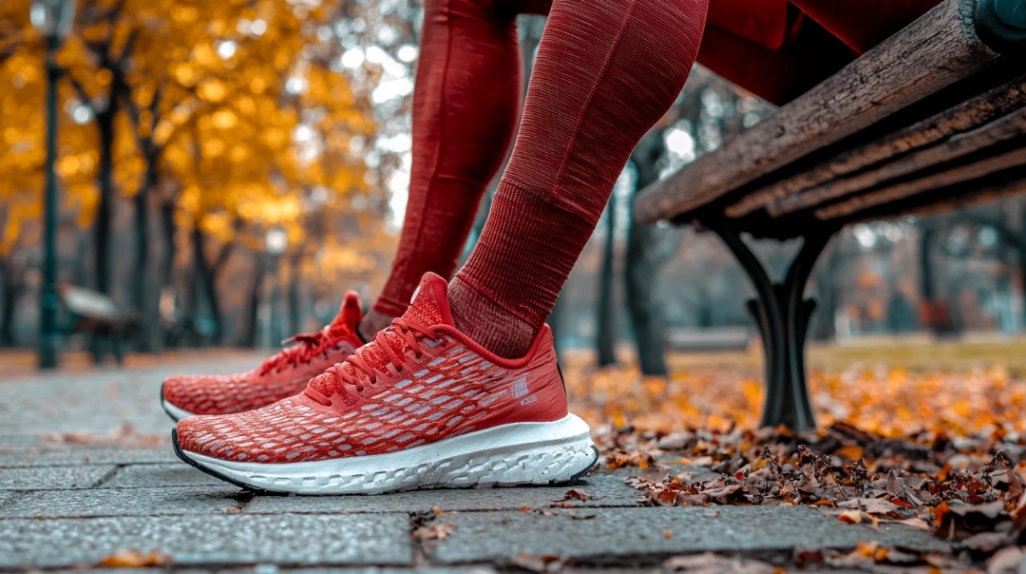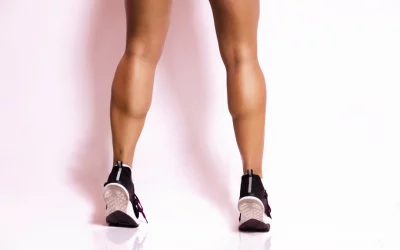Your Achilles tendon is a powerhouse, connecting your calf muscles to your heel and driving every step, jump, and sprint. But when it’s tight or overworked, it can leave you stiff, uncomfortable, and vulnerable to injuries.
Whether you’re an athlete pushing limits, a fitness enthusiast staying active, or someone tackling everyday mobility challenges, proper stretching is your secret weapon.
This guide dives into proven stretches to boost flexibility, prevent injuries, and keep you moving with confidence. Ready to unlock your Achilles tendon’s full potential? Let’s get stretching!
Benefits of Stretching the Achilles Tendon
Stretching your Achilles tendon provides a range of benefits that go beyond the tendon itself, impacting your overall mobility, injury prevention, and performance:
-
Improves Flexibility: A flexible tendon supports smoother movement, enhancing daily activities and athletic performance.
-
Prevents Injuries: Prepares the tendon for high-impact activities, reducing risks of strains or tears.
-
Relieves Tightness: Alleviates tension in calf muscles, supporting better muscle function.
-
Enhances Biomechanics: Maintains proper alignment and reduces overuse injury risks.
-
Boosts Balance and Stability: Improves control and coordination, lowering the risk of falls and injuries.
“I used to struggle with tightness and constant discomfort in my calves, but incorporating Achilles tendon stretches into my routine changed everything—I feel more balanced, my runs are smoother, and I haven’t dealt with an injury since.”
Effective Achilles Tendon Stretches for Flexibility and Injury Prevention
 1. Wall Calf Stretch
1. Wall Calf Stretch
Stretching is an essential component of any fitness or rehabilitation routine, as it helps maintain muscle flexibility, prevent injuries, and alleviate discomfort caused by prolonged physical activity. The Wall Calf Stretch, specifically, is a highly effective exercise targeting the Achilles tendon and calf muscles. This stretch is simple, beginner-friendly, and beneficial for anyone experiencing tightness from activities like running, jumping, or standing for extended periods.
Benefits of the Wall Calf Stretch
-
Relieves Muscle Tension: Eases stiffness and discomfort in the calves and Achilles tendon, making it ideal for recovery after physical activity.
-
Improves Flexibility: Regular practice enhances the range of motion in the lower leg muscles, reducing the risk of strains or injuries.
-
Prepares for Physical Activity: Acts as a warm-up stretch to prime the lower leg muscles for activities involving running or jumping.
How to Perform the Wall Calf Stretch
-
Position Yourself: Stand about an arm’s length away from a wall, facing it directly.
-
Set Up the Stretch: Place both hands on the wall at shoulder height for support. Step one foot back while keeping the leg straight and the heel firmly on the ground. The other leg should remain bent in front of you.
-
Stretch the Calf: Lean into the wall slowly until you feel a stretch in the calf muscle and Achilles tendon of the extended leg.
-
Hold and Switch: Maintain the stretch for up to 30 seconds, then switch legs and repeat. For a deeper stretch, slightly bend the back knee while keeping the heel down.
2. Heel Drop Stretch
The Heel Drop Stretch is a dynamic and effective exercise designed to elongate and strengthen the Achilles tendon while also targeting the calf muscles. It’s particularly beneficial for individuals looking to improve their range of motion, reduce stiffness, or adapt their tendons and muscles to physical stress. This stretch is frequently recommended for those recovering from or aiming to prevent Achilles-related injuries, as it combines flexibility and strength-building in one simple movement.
Benefits of the Heel Drop Stretch
-
Improves Flexibility: Helps to lengthen the Achilles tendon and calf muscles, enhancing mobility and reducing the risk of injuries.
-
Builds Tendon Strength: Gradually strengthens the tendon, allowing it to adapt to physical stress over time.
-
Reduces Stiffness: Alleviates tightness in the lower leg, which is particularly beneficial for those experiencing stiffness from repetitive activities like running or walking.
How to Perform the Heel Drop Stretch
-
Get into Position: Stand on the edge of a sturdy step, platform, or curb, with the balls of your feet on the surface and your heels hanging off. Hold onto a railing or wall for balance if needed.
-
Lower One Heel: Gently lower one heel below the level of the step while keeping the other foot flat for support. You should feel a deep stretch in the lower leg of the lowered foot.
-
Hold the Stretch: Maintain this position for up to 30 seconds, keeping the movement slow and controlled.
-
Switch Legs: Return the lowered foot to the level of the step and repeat the process with the opposite leg.
3. Seated Achilles Stretch
The Seated Achilles Stretch is an excellent choice for beginners or individuals with limited mobility. This low-impact exercise provides a safe and controlled way to stretch the Achilles tendon, making it ideal for those recovering from injuries or looking to improve flexibility without placing undue strain on the lower leg. It’s simple to perform and can be done almost anywhere, using a towel or resistance band as a tool.
Benefits of the Seated Achilles Stretch
-
Low-Impact and Safe: Perfect for recovery or individuals with limited mobility, reducing the risk of strain or overexertion.
-
Enhances Flexibility: Gently stretches the Achilles tendon and calf muscles, promoting better mobility in the lower leg.
-
Convenient and Accessible: Requires minimal equipment and space, making it easy to include in daily routines.
How to Perform the Seated Achilles Stretch
-
Sit Comfortably: Sit on the floor with one leg extended straight in front of you, or use a chair for added support if needed. Bend the opposite leg for comfort or stability.
-
Position the Band or Towel: Loop a towel, resistance band, or strap around the ball of your extended foot, holding both ends firmly with your hands.
-
Stretch the Achilles Tendon: Gently pull the towel or band toward you, flexing your foot and feeling a stretch along your Achilles tendon and calf muscle.
-
Hold and Switch: Maintain the stretch for up to 30 seconds, then relax and switch to the other leg. Repeat as needed.
4. Toe-to-Wall Stretch
The Toe-to-Wall Stretch is a simple yet effective exercise designed to enhance the mobility of the Achilles tendon and improve overall flexibility. Ideal for reducing tension in the lower leg, this stretch is particularly beneficial for individuals dealing with stiffness or chronic discomfort. It’s easy to perform and requires minimal space, making it a convenient addition to any routine.
Benefits of the Toe-to-Wall Stretch
-
Reduces Lower Leg Tension: Eases tightness in the Achilles tendon and surrounding muscles, promoting relaxation and recovery.
-
Enhances Flexibility: Increases the range of motion in the lower leg, helping to prevent injuries.
-
Supports Balance and Stability: Improves balance by strengthening and loosening critical muscle groups in the lower leg.
How to Perform the Toe-to-Wall Stretch
-
Position Yourself: Stand facing a wall, with your toes close to its base.
-
Set Up the Stretch: Place the ball of one foot against the wall while keeping your heel on the ground.
-
Lean Forward: Gently lean toward the wall until you feel a stretch in your Achilles tendon and calf. Be mindful not to overstretch.
-
Hold and Switch: Maintain the stretch for up to 30 seconds, then switch legs and repeat.
5. Downward Dog Pose
The Downward Dog Pose is a classic yoga posture that stretches the entire back of the legs, including the Achilles tendon. This versatile pose not only enhances flexibility but also strengthens various muscle groups, improves circulation, and supports recovery. It’s a staple in yoga routines and an excellent stretch for athletes and non-athletes alike.
Benefits of the Downward Dog Pose
-
Stretches Multiple Muscle Groups: Targets the calves, hamstrings, and lower back for a comprehensive stretch.
-
Promotes Circulation: Encourages blood flow to the lower body, aiding in recovery and reducing stiffness.
-
Builds Strength: Strengthens the arms, shoulders, and core while supporting overall flexibility.
How to Perform the Downward Dog Pose
-
Start in Position: Begin in a push-up or plank position, with your hands shoulder-width apart and feet hip-width apart.
-
Lift Your Hips: Push your hips upward, forming an inverted “V” shape with your body.
-
Stretch the Legs: Keep your legs straight and press your heels toward the ground. It’s okay if your heels don’t touch the floor completely.
-
Hold and Relax: Maintain this position for up to 30 seconds, focusing on elongating the back of your legs, then return to the starting position.
Incorporating these effective stretches into your routine is the key to improving flexibility, relieving tension, and preventing injury. However, maintaining consistency and ensuring proper technique can be challenging, especially without expert guidance. That’s where WeStretch makes a difference.
This innovative app acts as your personal stretching assistant, offering tailored plans, easy-to-follow demonstrations, and progress tracking to help you master stretches like the Wall Calf Stretch or Downward Dog Pose. Whether you’re a beginner or a seasoned pro, WeStretch ensures your stretching routine is effective, engaging, and safe. Discover how it can elevate your flexibility journey here.
 Tips for Effective Achilles Tendon Stretching
Tips for Effective Achilles Tendon Stretching
Stretching your Achilles tendon safely and effectively requires thoughtful preparation and consistent practice. Proper technique helps improve flexibility, enhance tendon health, and reduce the risk of injury. By following a few key principles, you can develop a routine that supports long-term mobility and strength.
Warming up is essential before stretching to prepare your muscles and prevent strain. Activities like light walking or ankle circles increase blood flow to the Achilles tendon, improving its flexibility and reducing the risk of irritation or microtears. Stretching a cold tendon can lead to injury, so prioritizing a warm-up is crucial.
Begin stretches gently and avoid forcing your tendon into extreme positions. Gradually increase intensity as your flexibility improves, focusing on controlled, deliberate movements. Proper alignment—such as keeping your back straight and feet aligned with your knees—ensures effective stretching and minimizes stress on other body parts.
Consistency is key for long-term results. Incorporate stretching into your routine multiple times a week to build flexibility and strength over time. Always listen to your body; stretching should feel like a gentle pull, not pain. Adjust or stop if discomfort occurs, ensuring safety while maintaining steady progress.
Exercise Smarter with WeStretch: Your All-in-One Stretching Assistant
A consistent full-body stretching routine is essential for improving flexibility, supporting injury prevention, and enhancing overall well-being. Carefully following simple yet effective stretches targeting the hamstrings, hip flexors, back, quads, chest, and shoulders, individuals of any fitness level can reap the benefits.
Regular stretching, with attention to proper form and consistency, can help you move more freely, recover faster, and feel better in everyday activities.
Looking for a way to add some fun to your stretching routine? Check out WeStretch—an app that’s like your own personal stretch coach! With tailored plans, easy-to-follow demos, and progress tracking, it’s got everything you need to keep you limber and on point. Ready to get flexible? Sign up today and let’s get stretching!
FAQ
How do you loosen a tight Achilles tendon?
Perform gentle stretching and strengthening exercises like calf stretches, seated towel stretches, and eccentric heel drops, ensuring proper warm-ups and gradual progression.
Is it good to stretch a sore Achilles tendon?
Stretching a sore Achilles tendon can promote healing if done gently with light, controlled stretches, avoiding pain or excessive force.
How do you release an Achilles tendon?
Release tension in the Achilles tendon by using gentle exercises like calf stretches, heel drops, and seated towel stretches, holding each stretch for up to 30 seconds and avoiding strain.
How do you relieve Achilles tendon stiffness?
Relieve stiffness through daily stretches such as heel drops and wall stretches, warming up beforehand, and maintaining consistency to improve flexibility.
What are some simple Achilles tendon stretches for beginners?
Beginner-friendly stretches include calf stretches against a wall and heel drops from a step, performed slowly and gently to improve flexibility and reduce injury risk.






